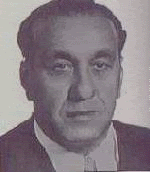 |
| JFK Motorcade in Dallas on 11/22/63 |
“In 2020, the FBI opened the Central Records Complex and began a multi-year effort to first ship and then electronically inventory and store closed case files from FBI field offices across the country,” a statement from the FBI to the Daily Beast read. “The resulting, more comprehensive records inventory, coupled with the technologic advances in automating the FBI’s record keeping processes, allows us to more quickly search and locate records.”
The JFK Assassination: Conspiracies and Coverups.
“The FBI conducted a new records search pursuant to President Trump’s Executive Order issued on January 23, 2025, regarding the declassification of the assassination files of JFK, RFK, and MLK. The search resulted in approximately 2,400 newly inventoried and digitized records that were previously unrecognized as related to the JFK assassination case file,” the statement continued.
“The FBI has made the appropriate notifications of the newly discovered documents and is working to transfer them to the National Archives and Records Administration for inclusion in the ongoing declassification process.”
The discovery of the records, which are contained within 14,000 pages of documents, was first reported by Axios Monday. The outlet claimed that the records were never received by an initial board that was tasked with reviewing and disclosing them, and that the White House was made aware of their existence on Friday.
“This is huge. It shows the FBI is taking this seriously,” Jefferson Morley, the vice president of the largest online record source for Kennedy’s death in America, told Axios. “The FBI is finally saying, ‘Let’s respond to the president’s order,’ instead of keeping the secrecy going.”
The contents of the newly uncovered records remain secret and were not even seen by the three sources who first notified Axios of their discovery.
Trump repeatedly promised that he would declassify JFK’s assassination records throughout his 2024 campaign trail, and subsequently saw that promise through during his first week in office.
“Providing Americans the truth after six decades of secrecy,” the president’s Jan. 23 executive order, which also vowed to declassify documents pertaining to the assassinations of Martin Luther King Jr. and Robert F. Kennedy, read.
JFK and the Unspeakable: Why He Died and Why It Matters.
JFK was shot and killed in Dallas on Nov. 22, 1963. The investigation at the time concluded that Lee Harvey Oswald, a former Marine turned communist activist, killed Kennedy and acted on his own.
The case has long been a magnet for conspiracy theories, however.
The National Archives and Records Administration has claimed that 97% of the estimated 5 million pages tied to JFK’s assassination have been made public.
The 1992 JFK Records Act saw that all documents were supposed to be handed over to the JFK Assassination Records Review Board and then to the National Archives to ultimately be made completely public by 2017.
On the advice of the CIA, Trump blocked the full disclosure during his first term, something he’s since expressed regret over, while former President Joe Biden only green-lit a limited release of records.
Those in favor of keeping the JFK documents secret have argued that they risk exposing secret intelligence gathering systems used by officials.
Thanks to Yasmeen Hamadeh.
The Final Witness: A Kennedy Secret Service Agent Breaks His Silence After Sixty Years.







 1930:
1930:  1978: Six burglars who struck at mob boss
1978: Six burglars who struck at mob boss 




